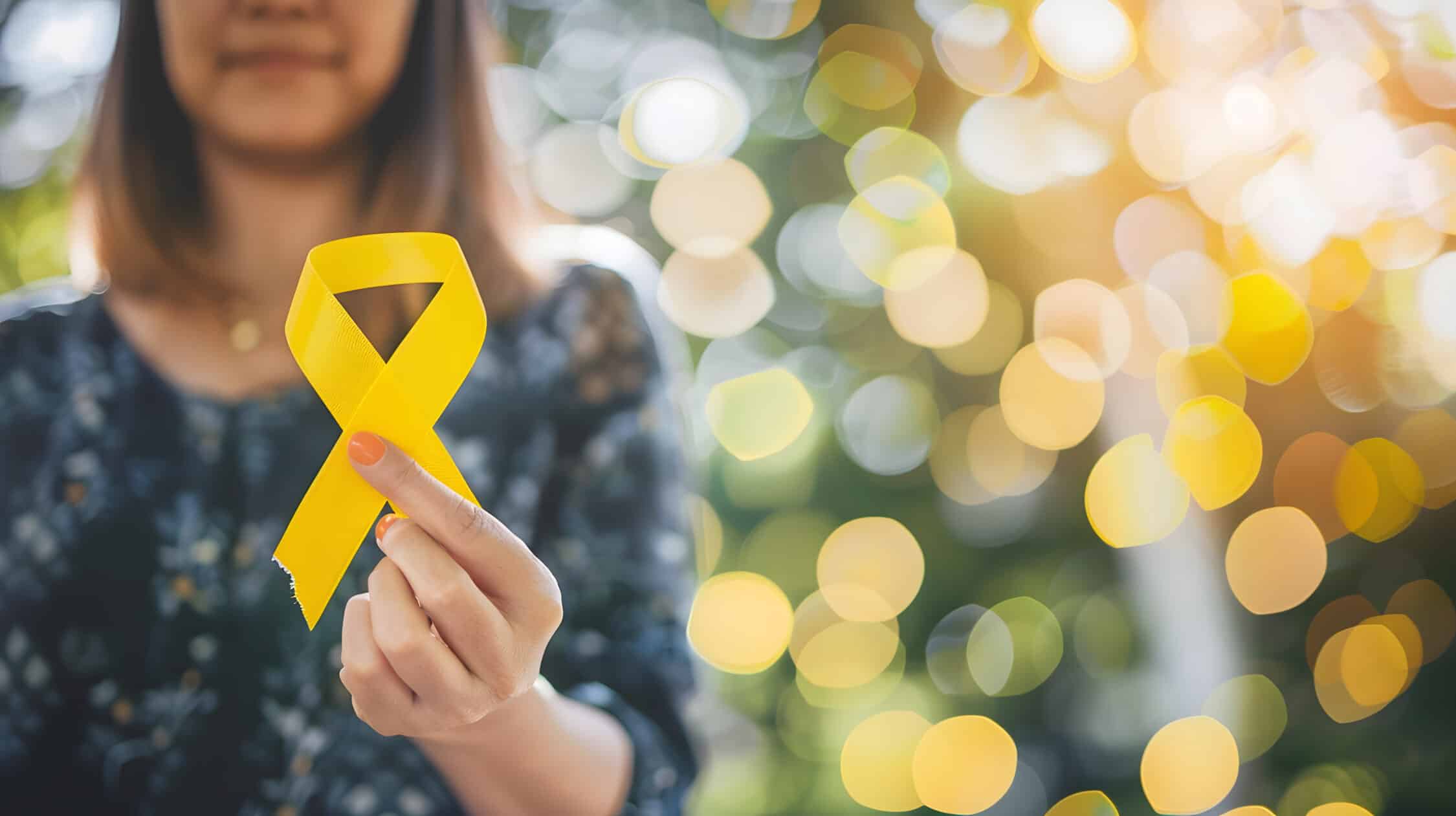
What is World Suicide Prevention Month?
As anyone who has been touched by suicide knows, death by self-harm creates enormous trauma in the lives of surviving loved ones, friends, and even casual acquaintances. The fabric of human life is torn for generations whenever any violent death takes place, and suicide is one of the worst ways of bringing harm to our collective heart.
Suicide is a leading cause of death in the United States and around the globe, as many heartbroken humans succumb to the supreme tragedy of severe isolation and despair that gives rise to thoughts of ending one’s life.
To be clear, there is no shame to be applied to such individuals, as anyone who has been there knows that the kind of extreme torment suffered by people longing to die isn’t easily judged away. At the same time, it can’t be glorified or glamorized away, either, as though there is anything noble in it because there isn’t anything wholesome about killing anyone, especially oneself.
This September, we at Villa Kali Ma invite you to honor World Suicide Prevention Month together with us. World Suicide Prevention Month is an awareness campaign observed every September, in hopes of strengthening collective commitment to preventing suicide.
To Villa Kali Ma’s mind, suicide is the result of extreme disconnection from one’s own life source, sense of value, and meaning. Addiction can and often does lead to suicide, as do the soul-fragmenting impacts of serious trauma. Several forms of mental illness are linked to self-harm as well.
Through our holistic programs for women, we are committed and devoted to helping to heal these epidemic ills through our daily work.
Why is World Suicide Prevention Month important?

Like addiction, suicide is no respecter of class, race, or any other lines and categories we draw between people in our minds. Suicide can touch any human through its signature mechanism of intense, intolerable pain of the heart and mind.
Although patterns of suffering and trauma run in families and across generational lines in intricate ways, what all suicidal people have in common is a loss of hope and a severe disconnection from their own love.
When the fire of a person’s spirit has gone out, it is important to understand that through contact and connection, the fire can be lit again. When we understand how critical each human life is to the rest of us – how we are all puzzle pieces of a picture that cannot be completed without each person’s contribution – we might remember it is in our own interest to make sure less of us fall through the cracks.
Statistics on women and suicide
According to an analysis of suicide statistics collected from 2001 to 2021, conducted by public health researcher Preeti Vankar, suicide is most common among women ages 45 to 64.
In 2020, 8 in every 100,000 women between the ages of 45 and 54 committed suicide. Although women are three times less likely than men to commit suicide, the rate of women attempting suicide has gradually increased over the last two decades.
According to a study of suicide rates across races and ethnicities published by the CDC by way of the National Center for Health Statistics, suicide rates increased between 1999 and 2017 for all race and ethnicity groups, with non-Hispanic white women showing the greatest rise in rate of suicide among females. Women’s suicide tends to be less violent (less likely to involve firearms than men), as women are more likely to try death by self-asphyxiation or poisoning.
Although completion of a suicide attempt is more common among men, women are more likely than men to experience suicidal thoughts and perform suicidal gestures. Women who suffer from addiction are more likely to experience suicidal ideation, or serious thoughts of suicide, and to attempt to take their own lives.
It is exceptionally important to acknowledge the significantly elevated suicide risk among women who are suffering from addiction, mental illness, and traumatization. Women with these conditions are vulnerable and need protection and support.
What are some facts about suicide?
Suicide is defined as death due to purposeful self-injury with the conscious intention to die. An accidental death by overdose or as a result of self-destructive behavior is not, strictly speaking, considered a suicide in the same way.
Not all efforts to end one’s own life succeed; some remain as suicide attempts. A suicide attempt means that someone intended genuinely to take their own life, but they were not successful.
It’s important to understand the degree of seriousness behind an attempt, as some expressions of self-harm are meant as ways of crying out for help, whereas others are more serious attempts to die. When a person has a serious intention to die, they will likely try again and must be protected and supported in greater measure.
People who have experienced other kinds of violence, including sexual violence, bullying, and child abuse, are more likely to attempt to commit suicide.
According to statistics presented by the CDC, suicide rates increased by around a third between 2000 and 2022. In 2022 alone, almost 50,000 Americans died by suicide, and the estimate for those experiencing suicidal thoughts was 13 million. Almost 4 million people planned a suicide attempt, and more than 1 million people attempted suicide but did not die.
The importance of taking care of your mental health

With statistics like these, we cannot afford to ignore the positive effects of proactively caring for mental health and all that that entails. While at large as a culture we have dismissed the stirrings of the soul, emotions, and the need for connection as secondary to productivity and external markers of success, our inner lives cannot be ignored without cost to all of us.
Therefore, in honor of World Suicide Prevention Month, we here at Villa Kali Ma invite you to consider how, when you take good care of your own mental health, including your soul, spirit, and physical body, you are helping the whole collective to learn how to have greater care for all of mankind.
When we have good mental health, we enjoy the following protective factors:
Greater Resilience
Self-Esteem
Positive, Healthy Relationships
Balanced Quality of Life
Greater Sense of Purpose and Calling
Career Success and Personal Productivity
More frequent experiences of Joy and Inspiration
What are some reasons you can think of, to practice good mental health habits?
Here are some thoughts of ours:
- When we fill ourselves up with love, self-care, healthy boundaries, and positive thoughts, we have a wellspring of soothing, hopeful, honoring energy to share with others
- When we honor the life inside ourselves unconditionally, whether we meet externally imposed standards of success or not, we promote the practice of loving and including all people, just as they are, no matter what, as part of the family of life
- We can live our lives in a way that shows that we value human life and that it is something to cherish and give thanks for. When we treat ourselves and those closest to us as precious, important, irreplaceable beloveds, we are helping the world’s soul remember its own unconditional value.
Depression can lead to suicide
Certain mental health patterns, such as depression and most especially bipolar disorder, are strongly linked to suicide.
It’s important to understand that persistent suicidal thoughts often accompany these conditions. Suicidal thoughts should never be taken as less than very, very serious symptoms. We can only hope that these thoughts are more metaphorical than literal, but we would never want to take that chance and assume that a person won’t one day act on that thought.
Such thoughts cannot be easily batted away when the spirit of a person is eclipsed by depression patterns, which represent a very serious sickness of mind and heart. With compassion, we must understand how a person can become entranced by the voice of suicide when one dances too closely with the dark, as people with these disorders cannot help but do (until they are able to heal from these conditions).
It stands to reason that those who are in intense suffering without a break may find themselves thinking about suicide if only out of desperation and hope that the suffering would end with death. For such people, the goal is to help them have hope and to imagine and see a future.
It is also helpful, if the suffering person has anyone they care about, to realistically understand and consider whom they would harm if they acted on the thoughts and harmed themselves. People who are depressed have an extremely negative image of themselves, in which they imagine that they are so terrible, that no one could love them or get any joy out of their presence. We must help people in this state understand how far off these thoughts are.
Has suicide worsened since COVID-19?
Some reports showed that the impact of what took place between 2020 and 2022 has been to increase the rate of suicide.
Recently some of these claims are refined as more data emerges. The current view shared by the National Institute of Mental Health says rather that the increase in suicide rates affects teenagers, but that other categories remained stable.
In general, researchers will learn more over time, and current data could be interpreted in different ways.
How can you get involved in Suicide Prevention Month?
This September, think creatively about how you might support all people to know that their lives are valuable, meaningful, and necessary in this world. Here are some ideas for ways to honor the spirit of the month.
1. Tell your people you love them
Make sure everyone around you knows how much you value them, unconditionally. Not only for what they do for you but for who they are.
2. Offer to hold space for someone
Everyone can use a little compassionate witnessing. If you sense someone in your life may be going through a hard time, offer to sit and listen to them, without offering advice or trying to fix it. Help them feel safe to share the truth of what they’re going through by modeling an attitude of peace and non-judgment.
3. Share your own experiences
If you have any experience with depression and suicidal thoughts, talk to people openly about how you got out of that particular spell. What was the cure that your spirit gave you, for this particular poison? How did it show up in your life? What actions did you need to take? Who helped you?
4. Give Thanks to the People Who Help You Feel Valued
If there are people in your life who help take care of you, and help you feel connected and important just as you are, make sure these people know that you feel and appreciate their love. Shine a light on the ways that they are helping to hold you in this world, connected and secure in the strands of the web of life.
Our individual therapy program can assist women thinking of suicide and self-harm
At Villa Kali Ma, we offer several paths of healing that all lead to the same place – a full and total reconnection to life.
One way we help women get there is through our individual therapy program, which is integrated into each of our programs for substance abuse, mental illness, and trauma.
Read more about how we protect and promote women’s well-being through individual therapy sessions.
Villa Kali Ma Cares About Women’s Mental Health
Women are at the heart and core of Villa Kali Ma. We offer addiction and mental health recovery programs to heal women from substance abuse, trauma, and mental health problems, including depression.
In our integrative sustainable recovery programs, we guide women to discover their inherent, eternal value, and teach them how to live in joy and self-love. From abiding awareness of one’s own lovability, self-harm becomes impossible.
References:
https://www.statista.com/statistics/1114127/female-suicide-rate-in-the-us-by-age-group/
https://www.cdc.gov/nchs/data/hestat/suicide/rates_1999_2017.htm
https://www.statista.com/statistics/1130500/suicide-thoughts-plans-attempts-women-us-by-substance-use-disorder/
https://www.cdc.gov/suicide/facts/index.html#cdcreference_3
https://www.nimh.nih.gov/news/science-news/2023/youth-suicide-rates-increased-during-the-covid-19-pandemic
https://www.ncbi.nlm.nih.gov/pmc/articles/PMC9331016/


